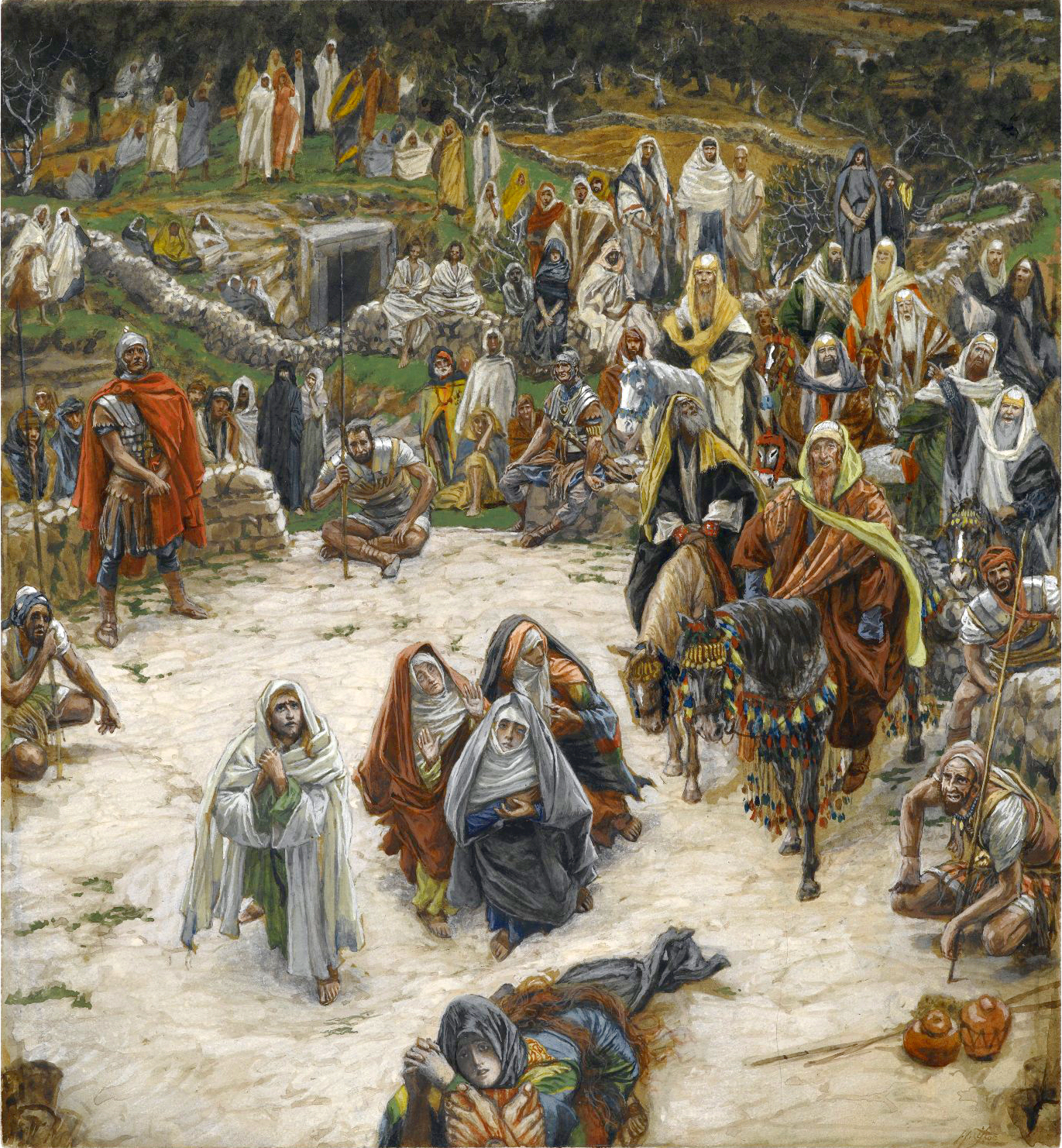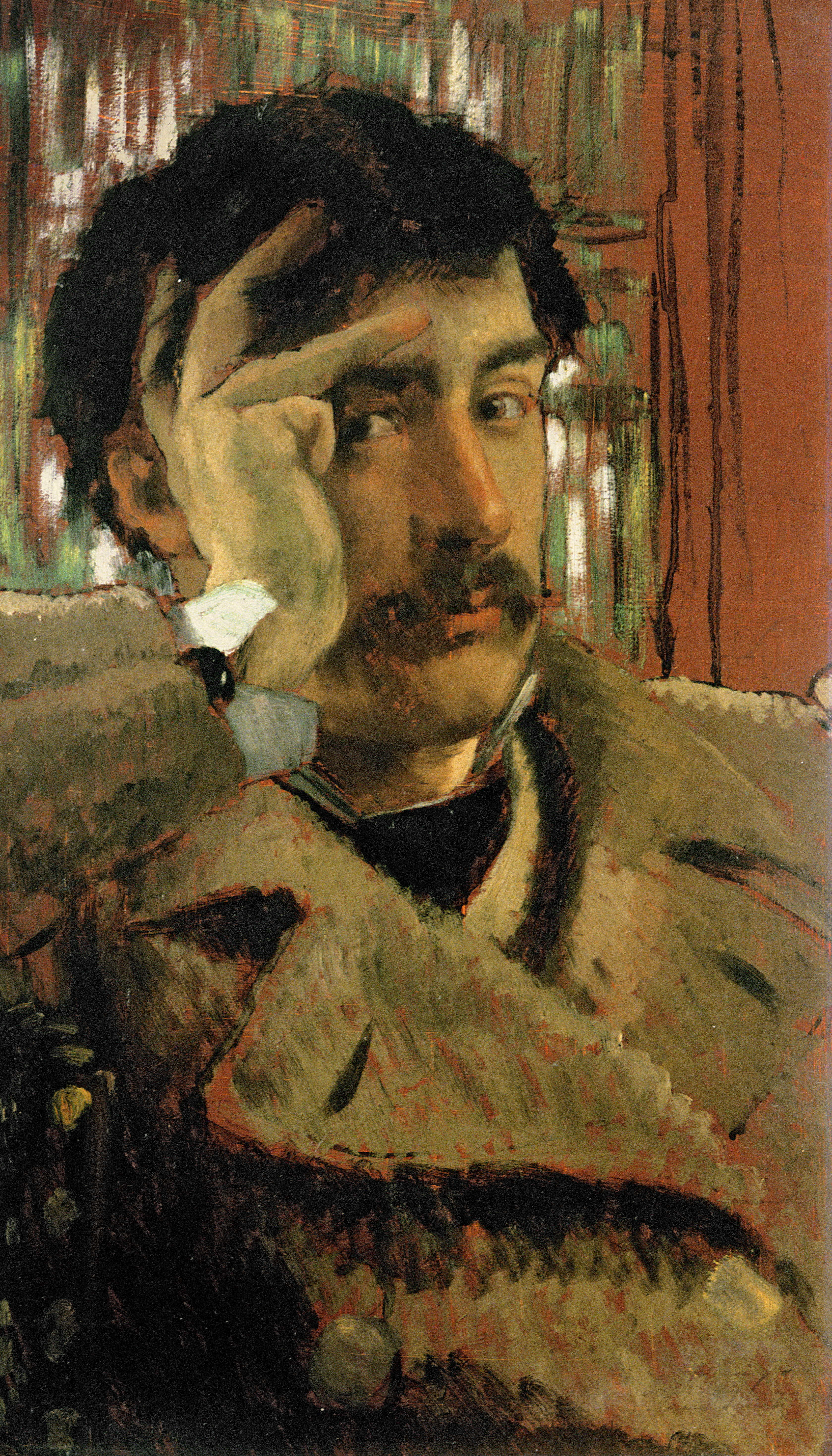What makes this painting so compelling is what is overtly missing. Over the centuries, countless paintings and sculptures have depicted Jesus crucified on the cross. James Tissot, however, has painted an unconventional and unique perspective—not of Jesus, but of what He saw when looking down from the cross. At Christ’s feet (barely noticeable at the bottom-center of the painting) is a gathering of humanity: sorrowful women who were devoted to Him, curious bystanders, a stoic Centurion, and self-satisfied high priests on horseback. In the background is the entrance to the tomb where Jesus’ body will be laid. This bold point of view encourages the beholder to imagine Christ’s thoughts and feelings in His final moments as He looks upon those who supported, condemned, or were indifferent to Him. It is a very powerful image.
Formerly a painter of society’s elite in London and Paris, Tissot had a spiritual re-awakening at 49 and embarked on a mission to illustrate the New Testament of the Bible. He was dismayed by flawed portrayals and misrepresentations and wrote, "For a long time the imagination of the Christian world has been led astray by the fancies of the artists; there is a whole army of delusions to be overturned." To prepare for his undertaking, Tissot made two extensive journeys to the Holy Land where he studied the customs, clothing, architecture, and landscape that he imagined remained largely unchanged since the time of Christ.
The culmination of Tissot’s efforts is a magnificent compilation of 350 watercolor paintings titled The Life of Our Lord Jesus Christ, which chronicles the events from the Annunciation through Jesus’ childhood, ministry, death, and Resurrection. When the nearly completed series was exhibited in Paris in 1894 and subsequently in London, New York, Chicago, and other venues, it was praised by critics and elicited strong emotional responses, including hushed reverence and weeping from viewers. The Brooklyn Museum in New York purchased the complete collection in 1900.
- Martina Koegan
P.S. Christians celebrate Good Friday today. Get to know more about Christ's crucifixion and its depictions in art here.


 James Tissot
James Tissot